
Can You Travel with a Hamster? A Comprehensive Guide
Traveling with a pet hamster isn’t as straightforward as it might seem. It requires careful consideration of your pet’s safety, comfort, and the logistics involved.

A hamster cage is more than just a habitat; it’s a safe space where your furry companion spends most of their time. When this sanctuary gets damaged, it’s not only inconvenient but also poses risks to your pet’s safety.
Repairing a hamster cage can seem daunting, but understanding the right approach makes it manageable. This guide will provide comprehensive steps to evaluate and mend various types of damages to your hamster’s home.
Identifying the type and extent of damage to your hamster cage is crucial before beginning any repairs.
This assessment will guide you in determining the most effective repair strategy, ensuring that the cage remains a safe environment for your hamster.
Inspect every corner, joint, and surface of your hamster cage thoroughly. Look for common issues like broken wires in metal cages, cracks in plastic, or splintering in wood.
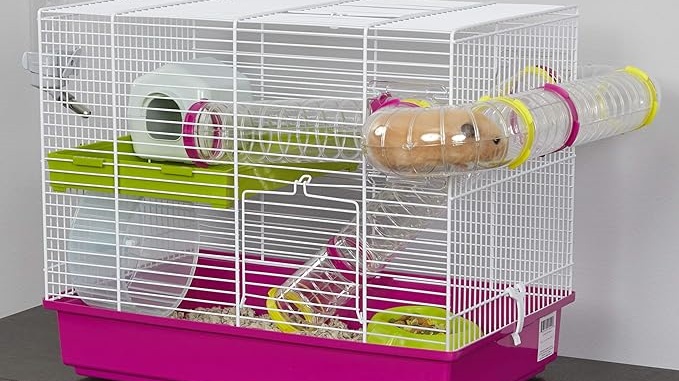
For metal cages, check for signs of rust or weakened joints. In plastic cages, look for stress marks or discolored areas that could indicate structural weakness.
With wooden cages, examine for any rot, mold, or excessive chewing damage. Understanding the specific problems helps in applying the right repair techniques and determining whether the cage is still safe for your hamster or needs to be replaced.
After evaluating the damage, decide if the cage can be safely repaired or if it’s time for a replacement.
If the structural integrity of the hamster cage is compromised, or if repairs would not provide a long-term solution, then replacing the cage might be the best option for your pet’s safety.
For minor issues like a loose hinge, a broken wire, or a small crack, repairs can be done effectively.
However, safety should always be the priority – if in doubt, choose replacement over repair for the well-being of your hamster.
Choosing the right tools and materials is essential for repairing your hamster cage. The correct selection ensures the repair is effective and, more importantly, safe for your hamster.
For any repair work on a hamster cage, having the right set of tools is crucial. Basic tools like pliers for bending wires, screwdrivers for tightening loose screws, and sandpaper for smoothing rough edges are essential.
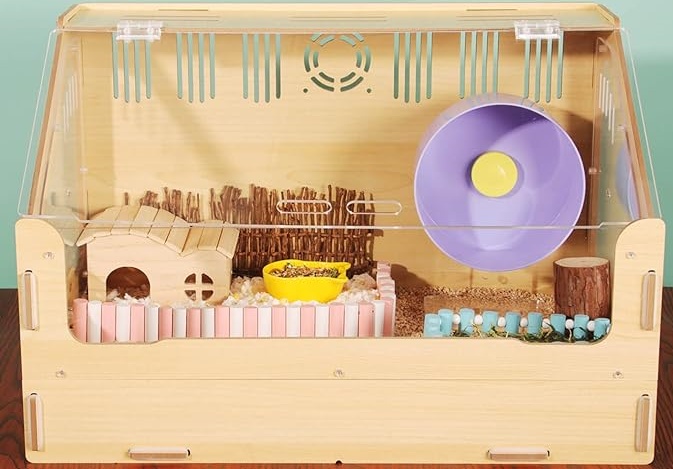
For metal cages, materials like non-toxic, rust-proof paint or replacement wires may be necessary. For plastic cages, a safe, pet-friendly adhesive is key.
In the case of wooden cages, non-toxic wood glue or filler is required. Always ensure the materials used are safe for your hamster, avoiding any toxic substances or sharp edges that could cause harm.
The safety of your hamster is paramount when selecting materials for cage repairs. For metal cages, use only non-toxic, pet-safe paints and sealants.
For plastic cages, ensure that the adhesive is strong yet safe if ingested in small quantities. For wooden cages, use only non-toxic, pet-friendly wood treatments.
Any new materials introduced into the hamster cage should be chew-resistant and safe if nibbled on, as hamsters are prone to chewing on almost anything in their environment.
Metal and plastic hamster cages each have specific types of damage that require particular repair strategies. It’s essential to approach these repairs with methods tailored to the material for effective and safe results.
In metal hamster cages, common problems include rust and broken bars. Rust can be treated with a thorough cleaning followed by application of a non-toxic rust remover or converter. After treating the rust, apply a coat of pet-safe paint to prevent future corrosion.
For broken bars, carefully realign and secure them in place. You can use a new piece of wire mesh, ensuring it’s securely attached and trimmed to prevent sharp edges.
After repairing, check that all repaired areas are smooth and free of any protrusions that could injure your hamster.
Plastic hamster cages often face issues like cracks or broken parts. For cracks, carefully apply a non-toxic, hamster-safe adhesive, ensuring it fills the crack completely. Hold the pieces firmly until the adhesive sets.
For broken parts like latches or connectors, look for replacement parts, ideally from the same manufacturer.
Ensure all repaired areas are thoroughly smoothed to prevent any injury to your hamster. After repairing, observe the cage for a few days to ensure it holds up and remains safe for your pet.
Wooden cages require a unique approach to repairs due to their material nature. Ensuring that repairs are safe and durable is key, as wood can be a tempting chew material for hamsters.
When repairing wooden hamster cages, focus on ensuring the repairs are safe and chew-resistant. For cracks or splits, use non-toxic wood glue.
Apply it evenly and clamp the wood until the glue dries completely. If larger areas are damaged, you might need to replace whole sections of wood.
Sand the repaired areas thoroughly to prevent any risk of splinters. It’s important to ensure that any wood treatment used is safe for pets, as hamsters often chew on their cages.
If you need to repaint or seal the wooden hamster cage, choose products that are non-toxic and labeled as safe for use around pets.
Avoid paints or sealants with strong fumes or harsh chemicals. Consider using water-based products, as they tend to have lower levels of harmful solvents.
Allow ample time for the paint or sealant to dry completely in a well-ventilated area before reintroducing your hamster to the cage.
Regularly inspect the painted or sealed areas to ensure they remain safe and intact.
After completing any repairs, it’s critical to thoroughly check and test the hamster cage for safety. This step ensures that your hamster will be returning to a secure and hazard-free environment.
Post-repair, inspect the hamster cage meticulously. Check for stability, ensuring all repairs are secure. Look for any sharp edges or points where your hamster might get caught or injured. Test the strength of the repaired areas, especially if you’ve had to replace parts of the cage.
It’s essential that the cage is as robust as it was before the damage, if not more so. Your hamster’s safety is paramount, and the cage should be able to withstand their active, curious nature.
After ensuring that the repairs are structurally sound, spend some time observing how your hamster interacts with the repaired areas.
Make sure they can’t dislodge or chew through any of the new components. It’s not uncommon for hamsters to be intrigued by changes in their environment, so watch for any unusual behavior that might indicate a problem with the repairs. A cautious approach here can prevent accidents and ensure the long-term safety of your pet.
Consistent maintenance and preventive measures are key to ensuring the longevity and safety of your hamster cage. Regular checks and minor fixes can prevent larger problems and keep the cage a safe home for your pet.
Regular maintenance is crucial for keeping your hamster cage in good condition. Clean the cage thoroughly and check for any signs of wear or damage.
Address small issues promptly, whether it’s tightening a loose screw or patching a small crack. This proactive approach can prevent minor damage from turning into major problems.
In addition, providing your hamster with appropriate chew toys can reduce the likelihood of them gnawing on the cage itself.
Preventative measures for your hamster cage involve regular inspections and immediate action on any signs of wear.
Check for loose bars, weak joints, or areas showing early signs of damage. Applying protective coatings to susceptible areas can help extend the life of the cage.
Additionally, consider the placement of the cage in your home. Keeping it away from extreme temperatures and humidity can prevent material degradation and contribute to the overall well-being of your hamster.
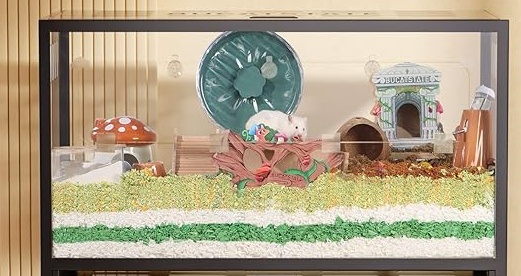
In conclusion, ensuring your hamster cage is well-maintained and promptly repaired when needed is key to providing a safe and comfortable home for your pet. Understanding the nature of the damage, choosing the right repair methods, and regularly inspecting the cage are all crucial for the well-being of your hamster.
By following these guidelines, you can ensure that your furry friend enjoys a secure and pleasant environment for years to come.


Traveling with a pet hamster isn’t as straightforward as it might seem. It requires careful consideration of your pet’s safety, comfort, and the logistics involved.
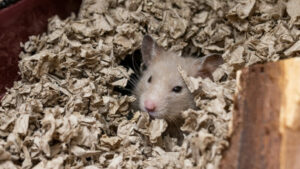
Finding the best hamster cage for Syrian hamster is crucial, as these curious, low-maintenance, and independent pets thrive in the right environment. The primary concern

When I began, the task of selecting essentials for a natural hamster habitat was daunting. To ease this process, I’ve assembled an exclusive set of

Have you ever wondered, “Are hamsters happier in bigger cages?” Generally YES. It’s a question that might seem straightforward, but there’s more to it than
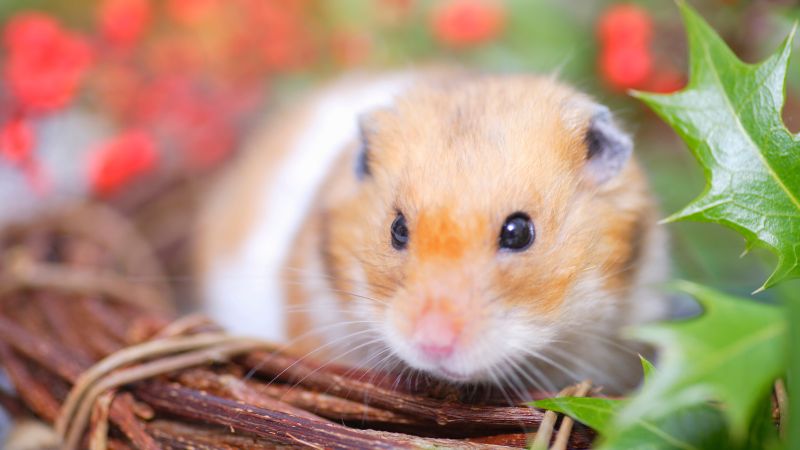
Traveling with a pet hamster isn’t as straightforward as it might seem. It requires careful consideration of your pet’s safety, comfort, and the logistics involved.
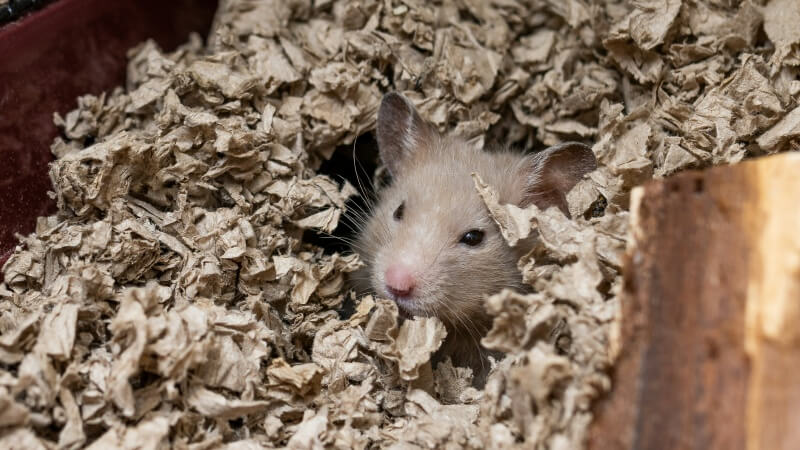
Finding the best hamster cage for Syrian hamster is crucial, as these curious, low-maintenance, and independent pets thrive in the right environment. The primary concern

When I began, the task of selecting essentials for a natural hamster habitat was daunting. To ease this process, I’ve assembled an exclusive set of

Have you ever wondered, “Are hamsters happier in bigger cages?” Generally YES. It’s a question that might seem straightforward, but there’s more to it than